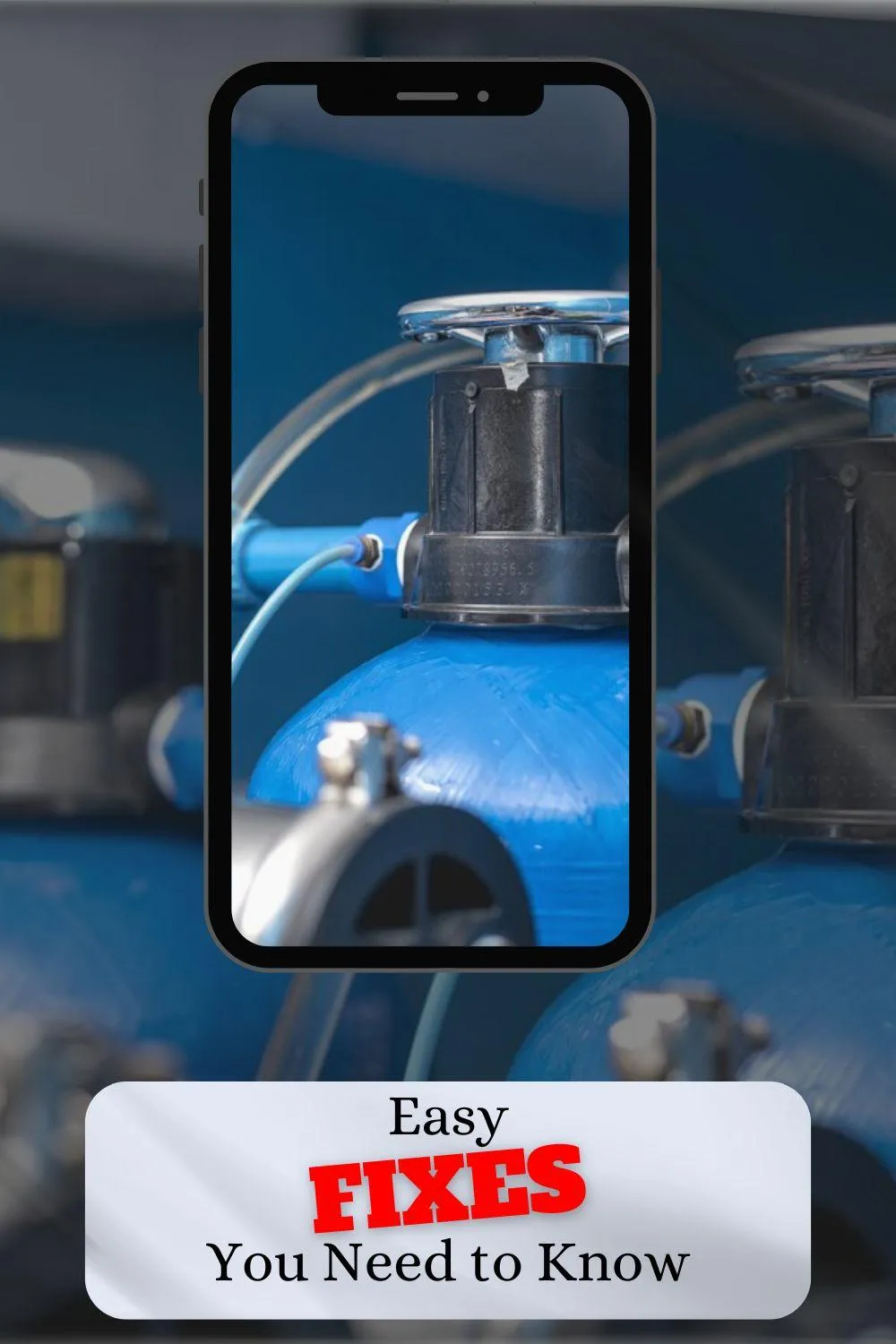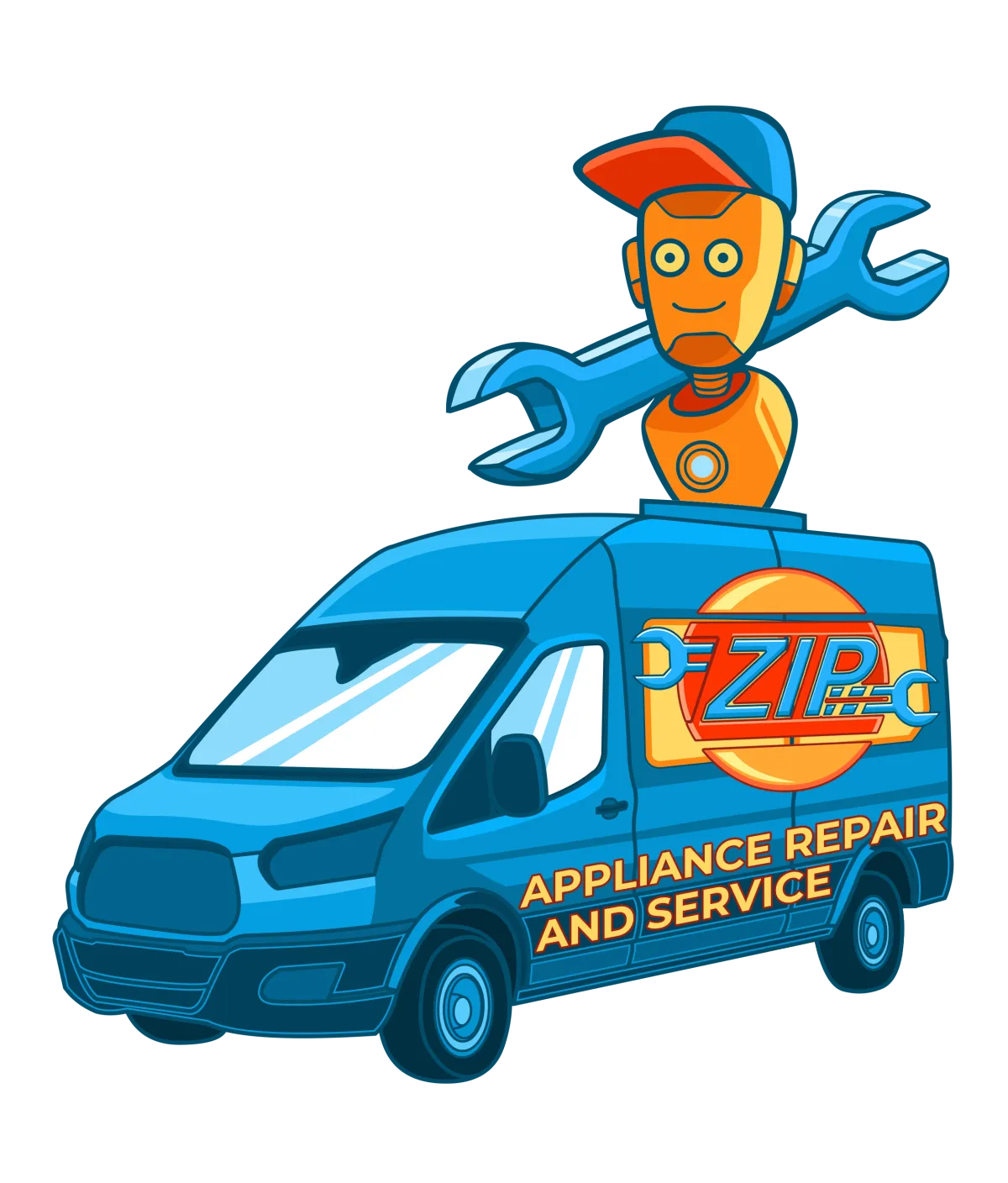Phone: (559) 272-4265
Appliance Repair Tips For Bakersfield, CA Residents

Water Softener Salt Mushing: Easy Fixes You Need to Know
Struggling with water softener salt mushing? Our detailed guide offers easy fixes and preventive tips to keep your system running smoothly. Keep your water soft and clean with insights from Zip Appliance and Plumbing Repair. - Appliance Boss
Introduction to Water Softener Salt Mushing
Water softeners are a vital part of many households, ensuring our water is free from the harsh effects of minerals like calcium and magnesium. However, one common issue that can disrupt their operation is salt mushing. Understanding salt mushing and how to address it can keep your water softener functioning optimally.
Understanding the Basics of Water Softening
Water softening is a process that removes minerals from hard water, making it more compatible with soap and extending the lifespan of plumbing. This is typically achieved through ion exchange, where calcium and magnesium ions in the water are replaced with sodium ions from the salt in the water softener.

What is Salt Mushing?
Salt mushing occurs when salt in the brine tank dissolves and recrystallizes into a thick sludge at the bottom of the tank. This sludge can prevent the water softener from regenerating properly, leading to inefficient softening and potential damage to the system.
Why Salt Mushing Happens
Salt mushing happens due to a combination of factors, including the quality of salt used, the presence of impurities, and improper maintenance of the brine tank. Over time, these factors can lead to the formation of insoluble salt compounds that settle at the bottom of the tank.
Common Signs of Salt Mushing
Signs of salt mushing include a decline in water softener efficiency, hard water spots on dishes and fixtures, and an unusually high water level in the brine tank. If you notice these symptoms, it's likely that salt mushing is the culprit.
Impact of Salt Mushing on Your Water Softener
Salt mushing can have several adverse effects on your water softener. It can reduce the efficiency of the regeneration process, increase wear and tear on the system, and ultimately lead to costly repairs or replacements if left unaddressed.
Preventing Salt Mushing: Proactive Tips
Preventing salt mushing involves proactive maintenance and careful attention to the type of salt you use. Regularly checking and cleaning the brine tank, as well as using high-quality salt, can significantly reduce the likelihood of mushing.
Choosing the Right Type of Salt
Not all salt is created equal. When selecting salt for your water softener, consider using high-purity salts such as evaporated salt pellets or solar salt. These types are less likely to contain impurities that contribute to mushing.
Regular Maintenance for Your Water Softener
Regular maintenance is key to preventing salt mushing. This includes routinely checking the brine tank, ensuring the proper level of salt, and cleaning out any accumulated sludge or debris.
How Often Should You Check for Salt Mushing?
It's advisable to check your water softener for signs of salt mushing every few months. Regular inspections can help you catch and address issues early, before they lead to more serious problems.
Cleaning Your Brine Tank
Cleaning the brine tank involves emptying it, removing any sludge or buildup, and thoroughly rinsing it out. This process should be done at least once a year, or more frequently if you notice recurring issues.
Using the Right Amount of Salt
Using the correct amount of salt is crucial for preventing mushing. Overfilling the tank can lead to salt bridging and mushing, while underfilling can reduce the effectiveness of the softener. Follow the manufacturer's recommendations for your specific model.
Breaking Up a Salt Bridge: Step-by-Step
Salt bridging occurs when a hard crust forms above the water level in the brine tank. To break up a salt bridge, use a broom handle or similar tool to gently break apart the crust, being careful not to damage the tank.
Tools You Need to Fix Salt Mushing
To fix salt mushing, you'll need basic tools such as a broom handle, a bucket, and a hose for rinsing. Having these tools on hand can make the process quicker and easier.
Safety Precautions Before You Start
Before starting any maintenance on your water softener, ensure the system is turned off and the water supply is shut off. Wear gloves and protective eyewear to prevent injury from salt or debris.
Step-by-Step Guide to Fixing Salt Mushing
Emptying the Brine Tank
To empty the brine tank, use a bucket to remove any standing water and salt. This will give you access to the sludge at the bottom of the tank.
Removing Hardened Salt
Use a broom handle or similar tool to break up and remove the hardened salt. Be thorough, ensuring all sludge is removed to prevent future issues.
Refilling the Brine Tank Correctly
Refill the brine tank with the appropriate amount of high-quality salt, following the manufacturer's guidelines. Avoid overfilling to prevent bridging and mushing.
Testing Your Water Softener After Fixes
After completing the maintenance, run a regeneration cycle to ensure the system is working correctly. Check for improved water softness and the absence of hard water spots.
When to Call a Professional
If you encounter persistent issues with salt mushing or if the problem seems beyond your ability to fix, it may be time to call a professional. A qualified technician can provide more thorough maintenance and repair services.
Long-Term Solutions for Salt Mushing
Investing in high-quality salt and regular maintenance are key long-term solutions for preventing salt mushing. Consider upgrading your water softener if you experience frequent issues.
Investing in High-Quality Salt
High-quality salts, such as evaporated or solar salt, contain fewer impurities and are less likely to cause mushing. Though they may be more expensive, they can save you money in the long run by reducing maintenance needs.
Upgrading Your Water Softener
If your current water softener is old or frequently experiences issues, upgrading to a newer model with advanced features may be beneficial. Modern water softeners are designed to be more efficient and require less maintenance.
Using Salt Alternatives
Salt alternatives, such as potassium chloride, can be used in some water softeners. These alternatives can help prevent mushing and are also better for the environment.
Conclusion: Maintaining a Healthy Water Softener System
Maintaining a healthy water softener system involves regular checks, using high-quality salt, and addressing issues like salt mushing promptly. By following these practices, you can ensure your water softener operates efficiently and provides you with soft, clean water.
FAQs About Water Softener Salt Mushing
What is salt mushing? Salt mushing is the formation of a thick sludge at the bottom of the brine tank, hindering the water softener's operation.
How can I prevent salt mushing? Regular maintenance, using high-quality salt, and avoiding overfilling the brine tank can help prevent salt mushing.
How often should I clean my brine tank? Clean your brine tank at least once a year or more frequently if you notice issues.
Common Myths About Salt Mushing
Myth: All salt types are the same
Not true. Different salts have varying levels of purity, affecting the likelihood of mushing.
Myth: Salt mushing can't be prevented
Salt mushing can be prevented with proper maintenance and using the right type of salt.
Additional Resources and Tips
For more information on water softener maintenance, check manufacturer websites, local water treatment specialists, and online forums where users share their experiences and solutions.
Regular Maintenance Checklist
Check brine tank every few months
Use high-quality salt
Clean brine tank annually
Run regular regeneration cycles
Monitor water softness levels
Community Tips and Shared Experiences
Join online communities or local groups to exchange tips and experiences with other water softener users. Sharing knowledge can provide new insights and solutions to common issues.
Encouraging Feedback and Questions
Your feedback and questions are valuable. Share your experiences and ask questions to help improve the knowledge base for everyone dealing with water softener salt mushing.
Final Thoughts on Water Softener Salt Mushing
Salt mushing can be a frustrating issue, but with the right knowledge and proactive maintenance, it can be effectively managed. Keep your water softener in top condition to enjoy soft, clean water year-round. For assistance, you can reach Zip Appliance and Plumbing Repair at www.ziprepairservice.com or call (661) 387-2282. We're here to help!

Water Softener Salt Mushing: Easy Fixes You Need to Know
Struggling with water softener salt mushing? Our detailed guide offers easy fixes and preventive tips to keep your system running smoothly. Keep your water soft and clean with insights from Zip Appliance and Plumbing Repair. - Appliance Boss
Introduction to Water Softener Salt Mushing
Water softeners are a vital part of many households, ensuring our water is free from the harsh effects of minerals like calcium and magnesium. However, one common issue that can disrupt their operation is salt mushing. Understanding salt mushing and how to address it can keep your water softener functioning optimally.
Understanding the Basics of Water Softening
Water softening is a process that removes minerals from hard water, making it more compatible with soap and extending the lifespan of plumbing. This is typically achieved through ion exchange, where calcium and magnesium ions in the water are replaced with sodium ions from the salt in the water softener.

What is Salt Mushing?
Salt mushing occurs when salt in the brine tank dissolves and recrystallizes into a thick sludge at the bottom of the tank. This sludge can prevent the water softener from regenerating properly, leading to inefficient softening and potential damage to the system.
Why Salt Mushing Happens
Salt mushing happens due to a combination of factors, including the quality of salt used, the presence of impurities, and improper maintenance of the brine tank. Over time, these factors can lead to the formation of insoluble salt compounds that settle at the bottom of the tank.
Common Signs of Salt Mushing
Signs of salt mushing include a decline in water softener efficiency, hard water spots on dishes and fixtures, and an unusually high water level in the brine tank. If you notice these symptoms, it's likely that salt mushing is the culprit.
Impact of Salt Mushing on Your Water Softener
Salt mushing can have several adverse effects on your water softener. It can reduce the efficiency of the regeneration process, increase wear and tear on the system, and ultimately lead to costly repairs or replacements if left unaddressed.
Preventing Salt Mushing: Proactive Tips
Preventing salt mushing involves proactive maintenance and careful attention to the type of salt you use. Regularly checking and cleaning the brine tank, as well as using high-quality salt, can significantly reduce the likelihood of mushing.
Choosing the Right Type of Salt
Not all salt is created equal. When selecting salt for your water softener, consider using high-purity salts such as evaporated salt pellets or solar salt. These types are less likely to contain impurities that contribute to mushing.
Regular Maintenance for Your Water Softener
Regular maintenance is key to preventing salt mushing. This includes routinely checking the brine tank, ensuring the proper level of salt, and cleaning out any accumulated sludge or debris.
How Often Should You Check for Salt Mushing?
It's advisable to check your water softener for signs of salt mushing every few months. Regular inspections can help you catch and address issues early, before they lead to more serious problems.
Cleaning Your Brine Tank
Cleaning the brine tank involves emptying it, removing any sludge or buildup, and thoroughly rinsing it out. This process should be done at least once a year, or more frequently if you notice recurring issues.
Using the Right Amount of Salt
Using the correct amount of salt is crucial for preventing mushing. Overfilling the tank can lead to salt bridging and mushing, while underfilling can reduce the effectiveness of the softener. Follow the manufacturer's recommendations for your specific model.
Breaking Up a Salt Bridge: Step-by-Step
Salt bridging occurs when a hard crust forms above the water level in the brine tank. To break up a salt bridge, use a broom handle or similar tool to gently break apart the crust, being careful not to damage the tank.
Tools You Need to Fix Salt Mushing
To fix salt mushing, you'll need basic tools such as a broom handle, a bucket, and a hose for rinsing. Having these tools on hand can make the process quicker and easier.
Safety Precautions Before You Start
Before starting any maintenance on your water softener, ensure the system is turned off and the water supply is shut off. Wear gloves and protective eyewear to prevent injury from salt or debris.
Step-by-Step Guide to Fixing Salt Mushing
Emptying the Brine Tank
To empty the brine tank, use a bucket to remove any standing water and salt. This will give you access to the sludge at the bottom of the tank.
Removing Hardened Salt
Use a broom handle or similar tool to break up and remove the hardened salt. Be thorough, ensuring all sludge is removed to prevent future issues.
Refilling the Brine Tank Correctly
Refill the brine tank with the appropriate amount of high-quality salt, following the manufacturer's guidelines. Avoid overfilling to prevent bridging and mushing.
Testing Your Water Softener After Fixes
After completing the maintenance, run a regeneration cycle to ensure the system is working correctly. Check for improved water softness and the absence of hard water spots.
When to Call a Professional
If you encounter persistent issues with salt mushing or if the problem seems beyond your ability to fix, it may be time to call a professional. A qualified technician can provide more thorough maintenance and repair services.
Long-Term Solutions for Salt Mushing
Investing in high-quality salt and regular maintenance are key long-term solutions for preventing salt mushing. Consider upgrading your water softener if you experience frequent issues.
Investing in High-Quality Salt
High-quality salts, such as evaporated or solar salt, contain fewer impurities and are less likely to cause mushing. Though they may be more expensive, they can save you money in the long run by reducing maintenance needs.
Upgrading Your Water Softener
If your current water softener is old or frequently experiences issues, upgrading to a newer model with advanced features may be beneficial. Modern water softeners are designed to be more efficient and require less maintenance.
Using Salt Alternatives
Salt alternatives, such as potassium chloride, can be used in some water softeners. These alternatives can help prevent mushing and are also better for the environment.
Conclusion: Maintaining a Healthy Water Softener System
Maintaining a healthy water softener system involves regular checks, using high-quality salt, and addressing issues like salt mushing promptly. By following these practices, you can ensure your water softener operates efficiently and provides you with soft, clean water.
FAQs About Water Softener Salt Mushing
What is salt mushing? Salt mushing is the formation of a thick sludge at the bottom of the brine tank, hindering the water softener's operation.
How can I prevent salt mushing? Regular maintenance, using high-quality salt, and avoiding overfilling the brine tank can help prevent salt mushing.
How often should I clean my brine tank? Clean your brine tank at least once a year or more frequently if you notice issues.
Common Myths About Salt Mushing
Myth: All salt types are the same
Not true. Different salts have varying levels of purity, affecting the likelihood of mushing.
Myth: Salt mushing can't be prevented
Salt mushing can be prevented with proper maintenance and using the right type of salt.
Additional Resources and Tips
For more information on water softener maintenance, check manufacturer websites, local water treatment specialists, and online forums where users share their experiences and solutions.
Regular Maintenance Checklist
Check brine tank every few months
Use high-quality salt
Clean brine tank annually
Run regular regeneration cycles
Monitor water softness levels
Community Tips and Shared Experiences
Join online communities or local groups to exchange tips and experiences with other water softener users. Sharing knowledge can provide new insights and solutions to common issues.
Encouraging Feedback and Questions
Your feedback and questions are valuable. Share your experiences and ask questions to help improve the knowledge base for everyone dealing with water softener salt mushing.
Final Thoughts on Water Softener Salt Mushing
Salt mushing can be a frustrating issue, but with the right knowledge and proactive maintenance, it can be effectively managed. Keep your water softener in top condition to enjoy soft, clean water year-round. For assistance, you can reach Zip Appliance and Plumbing Repair at www.ziprepairservice.com or call (661) 387-2282. We're here to help!
If your dryer has been giving you problems, contact Zip Appliance Repair & Service at (661) 387-2282

Appliance Repair In A Zip
If you need a dryer repair call our Team at (661) 387-2282, or visit our online scheduling page to request service.
Appliance Repair
Plumbing Repair Services
HAVE A QUESTION, CALL (661) 387-2282

Online Offers
Take advantage of our online discount offers - save time and money...

Residential & Commercial appliances
See what our company can do for you

Appliance Repair Tips
If your appliance is not working properly...

1405 Commercial Way ste 100
Bakersfield, CA 93309
Lic # 1116346
Equipment We Sevice
- A Call To Confirm Your Appointment Time
- A Email Detailing Your Assigned Technician
- Information Needed Before The Repair Can Be Started
- An Estimate Of Work To Be Done
© 2025 ZIP APPLIANCE REPAIR & SERVICE LLC








